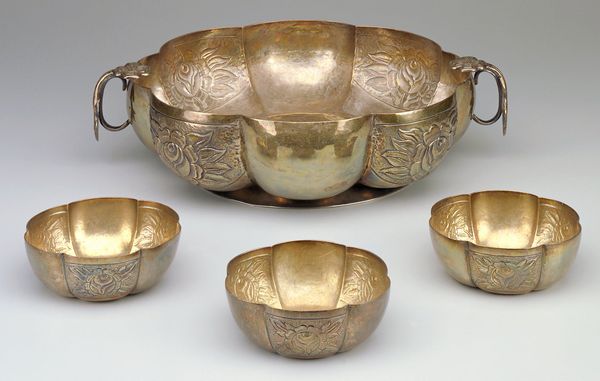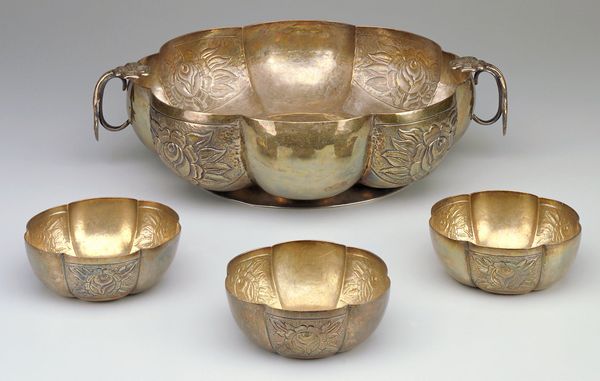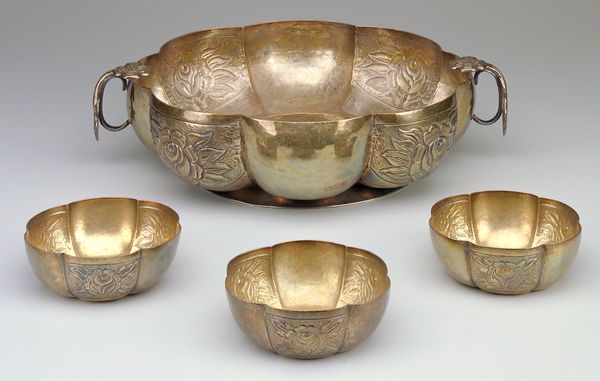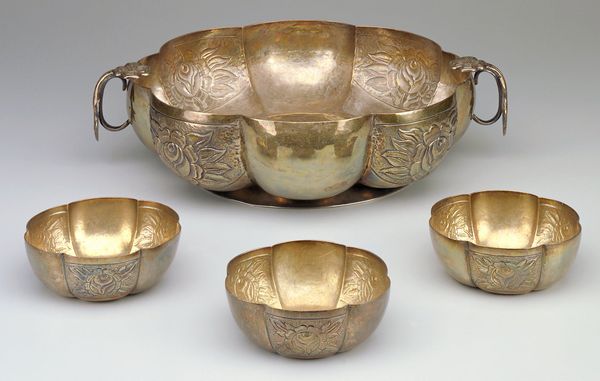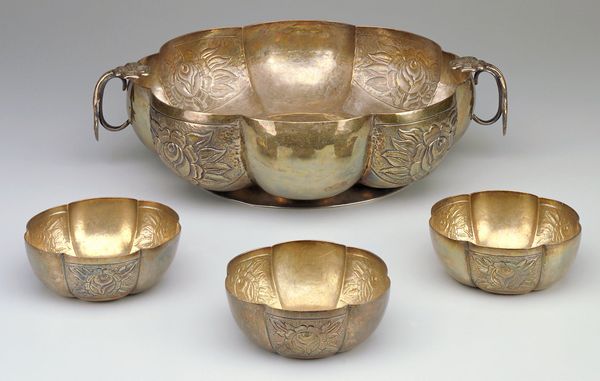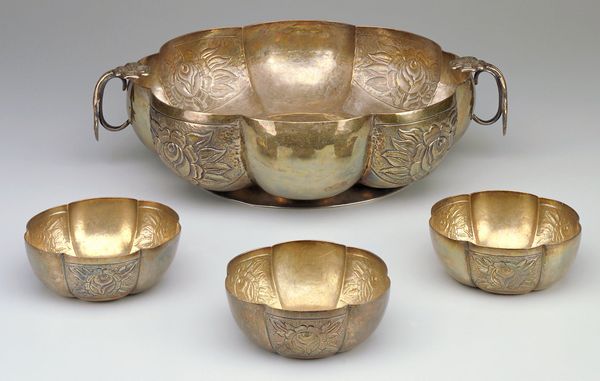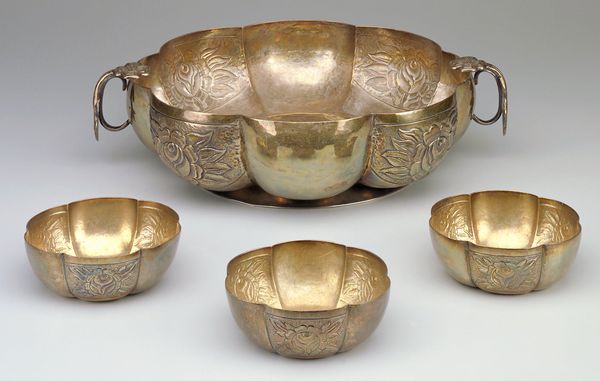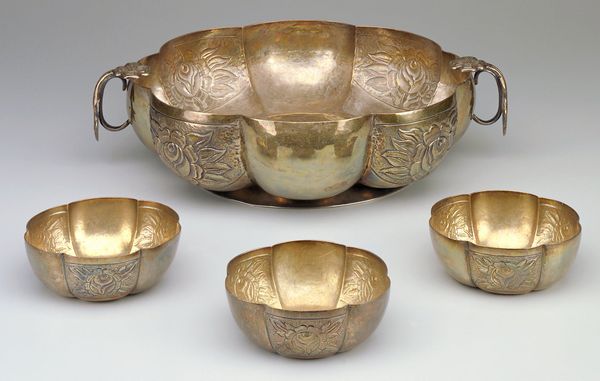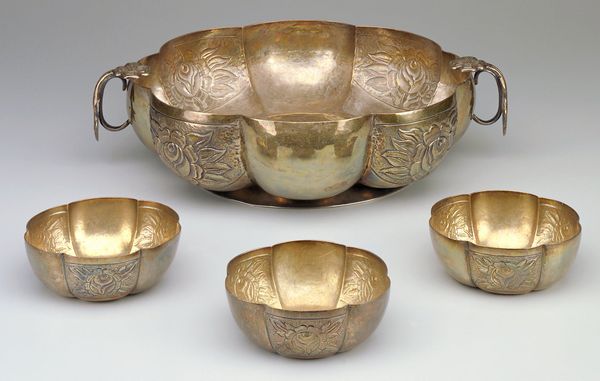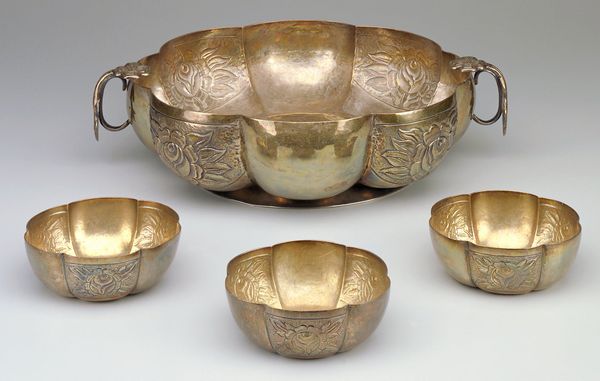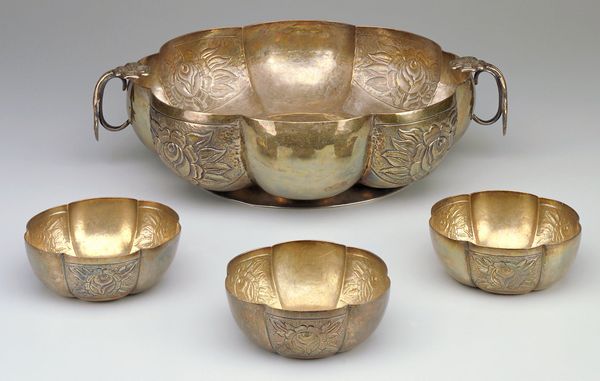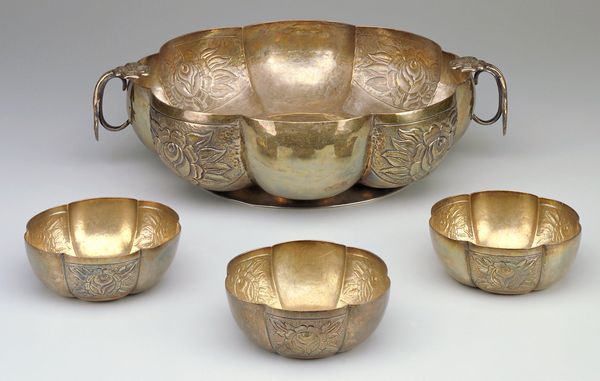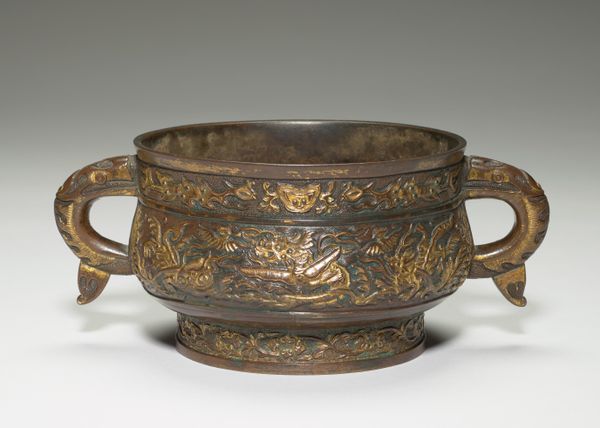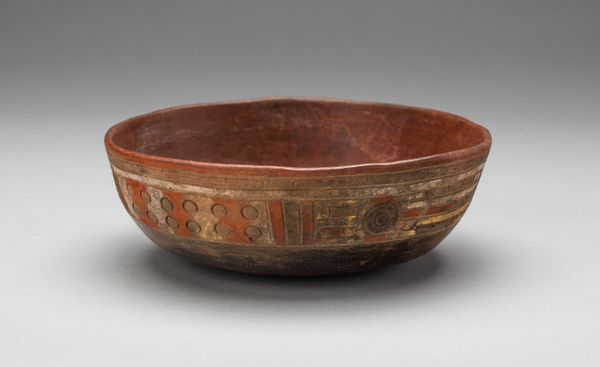
silver, metal, ceramic
#
silver
#
metal
#
ceramic
#
ceramic
Dimensions: 1 5/8 x 4 11/16 x 4 5/8 in. (4.1 x 11.9 x 11.7 cm)
Copyright: Public Domain
Curator: This striking object, a "Fingerbowl" created circa 1929-1930, calls to mind an era defined by opulence and etiquette. Crafted from ceramic, silver, and metal, it currently resides here at the Minneapolis Institute of Art. What's your initial take on it? Editor: Immediately, I'm drawn to the metal’s muted gleam—it evokes a bygone elegance. The ensemble carries a sense of ceremonial purpose. Do the rose motifs add to that formality? Curator: They do, indeed. The floral ornamentation carries the cultural weight of beauty, luxury, and cultivation that are typical for elite consumer goods during that period. In terms of history, it shows us the socio-economic dynamics between artist-made, high-end items, versus industrially mass-produced items of daily use. Editor: Visually, I can see the Art Deco influence in the stylization of those roses; yet, a hint of something older resonates. Is this purely ornamental, or might it also tie into a more profound symbology associated with purity or hospitality? Curator: The application of flora patterns was common throughout many historical decorative items of different origins. We can't always infer deliberate iconographic intentions for mass-produced decorative elements; there isn’t always necessarily a deeply ingrained encoded meaning behind its motif. Editor: True. Still, when I see such repeated botanical imagery, especially on an item meant for cleansing, my mind jumps to the historical and even psychological importance attached to flowers—evoking beauty, the ephemeral nature of life, and even a connection to rituals. Curator: Perhaps. I am compelled to consider, what was the intention of the maker and commissioners here, what would their experience be when consuming from such fine tableware? These items, after all, also functioned as important signs of status and self-representation. Editor: Right, the intersection of material culture and social signalling—it adds another layer to the viewing. Knowing all of that reframes my experience of its quiet gleam, transforming it from mere elegance into something layered with the cultural assumptions of its time. Curator: Indeed. Objects like these allow us a tactile connection to history.
Comments
No comments
Be the first to comment and join the conversation on the ultimate creative platform.
